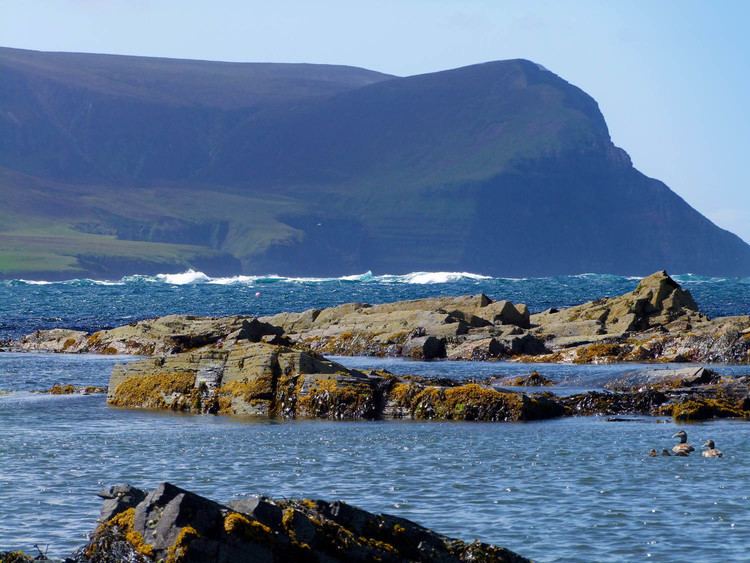Norse name Há-øy Area rank 12 Country Scotland Highest elevation 479 m Council area Orkney Island groups British Isles, Orkney | OS grid reference ND263961 Sovereign state United Kingdom Area 143.2 km² Population 272 (2001) Lieutenancy area Orkney | |
 | ||
Meaning of name Old Norse for 'high island' | ||
Zion y lennox hoy lo siento ft tony dize official video
Hoy (from Norse Háey meaning high island) is an island in Orkney, Scotland. With an area of 143 square kilometres (55 sq mi) it is the second largest in the archipelago after the Mainland. It is connected by a causeway called The Ayre to South Walls. Unusually, the two islands are treated as one entity by the UK census.
Contents
- Zion y lennox hoy lo siento ft tony dize official video
- Map of Hoy Stromness UK
- 10 engo flow hoy ft bad bunny official audio
- Description
- Wildlife
- In popular culture
- References
Map of Hoy, Stromness, UK
10 engo flow hoy ft bad bunny official audio
Description
The dramatic coastline of Hoy greets visitors travelling to Orkney by ferry from the Scottish mainland. It has extremes of many kinds: some of the highest sea cliffs in the UK at St John's Head, which reach 350 metres (1,150 ft); the impressive and famous sea stack, the Old Man of Hoy; some of the most northerly surviving natural woodland in the British Isles and the remote possibility that the Orkney charr (Salvelinus inframundus), last described in 1908, survive in Heldale Water. The most northerly Martello Towers were built to defend the area during the Napoleonic War, but were never used in combat.
The highest point in Orkney, Ward Hill, is on Hoy.
The main naval base for the British fleet in both the First and Second World Wars, Scapa Flow, was situated at Lyness in the southeast of the island. Some rather incongruous Art Deco structures nearby date from this period.
An unusual rock-cut tomb, the Dwarfie Stane, lies in the Rackwick valley in the north of the island. It is unique in northern Europe, bearing similarity to Neolithic or Bronze Age tombs around the Mediterranean. The tomb gets its name as it is very small and was said to be carved by dwarfs.
In Norse mythology, Hoy is the location of the never-ending battle between Hedin and Högni.
Orkney Ferries serve the island with two routes, one of which links Lyness on Hoy and Longhope on Walls with the island of Flotta and Houton on the Orkney Mainland. The other route links Moaness in Hoy to the island of Graemsay and Stromness on Orkney Mainland.
Hoy is part of the Hoy and West Mainland National Scenic Area, one of 40 in Scotland.
Wildlife
Hoy is an Important Bird Area. The northern part of the island is an RSPB reserve due to its importance for birdlife, particularly great skuas and red-throated divers. It was sold to the RSPB by the Hoy Trust for a nominal amount. Anastrepta orcadensis, a liverwort also known as Orkney Notchwort, was first discovered on Ward Hill by William Jackson Hooker in 1808.
In popular culture
Hoy is featured prominently in the 1984 video for "Here Comes The Rain Again" by Eurythmics.
